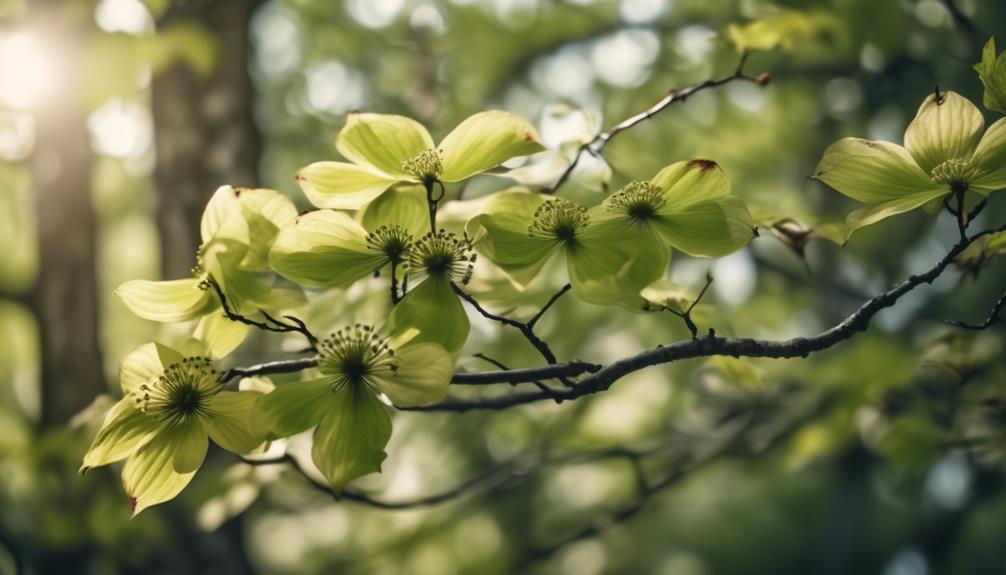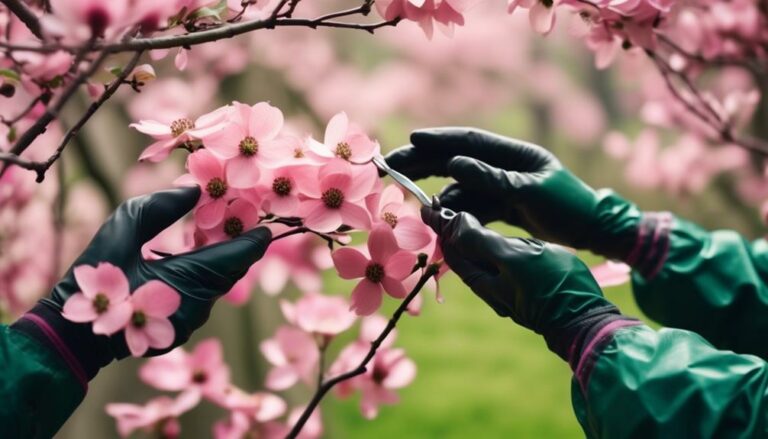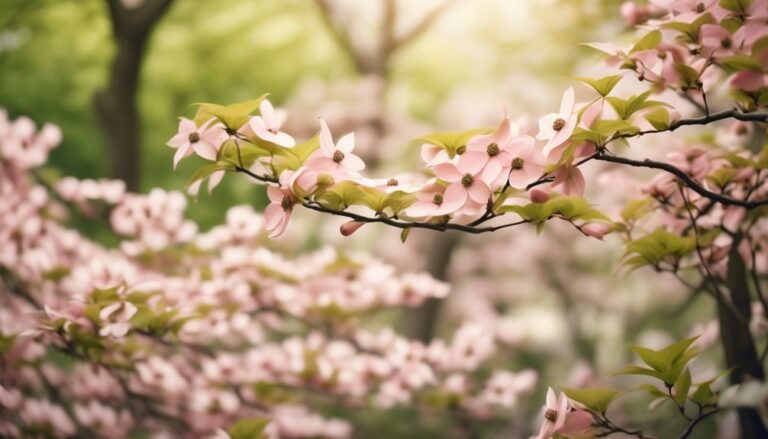What Are Common Diseases in Dogwood Trees and How to Treat Them?
Imagine walking through a picturesque garden, surrounded by vibrant flowers and lush greenery. As you admire the beauty of the landscape, your eyes are drawn to a dogwood tree, its delicate white blossoms shining in the sunlight.
However, beneath its enchanting facade, dogwood trees are not immune to diseases that can threaten their health and beauty. In this discussion, we will explore the common diseases that can afflict dogwood trees and provide you with valuable insights on how to effectively treat and prevent them.
So, let's uncover the secrets to maintaining the vitality and splendor of these beloved trees.
Armillaria Root Rot Treatment
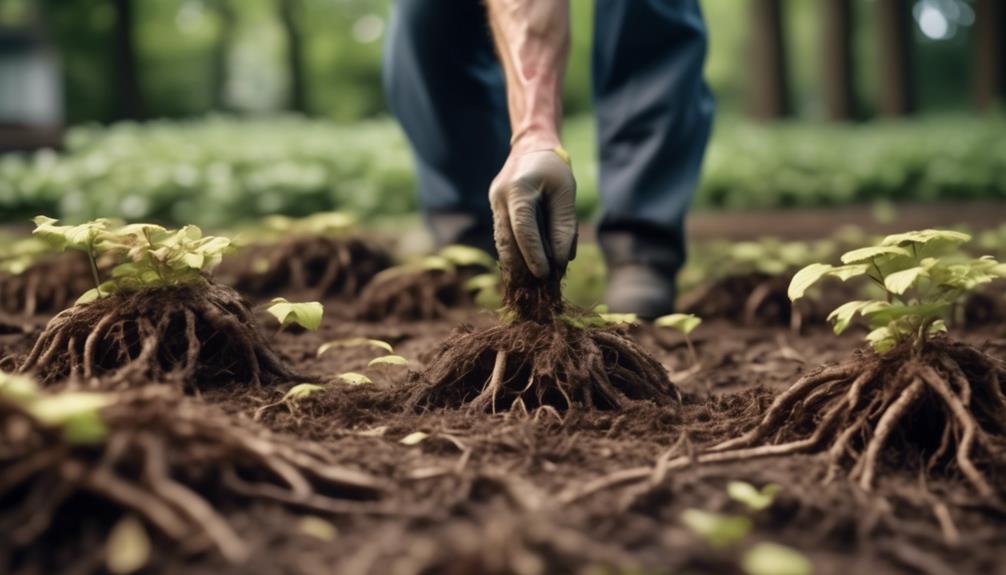
To effectively treat Armillaria Root Rot in dogwood trees, it's crucial to remove and destroy the infected specimen, as there's currently no known cure for this disease.
Armillaria Root Rot is a destructive fungal disease that attacks the roots and can spread to the entire tree. Symptoms of this disease include leaf spots, wilting, and dieback of branches. Infected leaves may show spots or discoloration, and the tree may also produce fewer flowers and smaller flower bracts.
To manage this disease, it's important to prune infected tissues and improve inter-canopy airflow.
Additionally, planting resistant species like Cornus kousa and Rutgers Hybrids is recommended. Fungicide sprays starting at bud break can also help control the spread of Armillaria Root Rot.
Botrytis Blight Control
Botrytis blight control requires proactive measures to prevent the spread of this fungal disease.
Here are some important steps to take in order to manage and control botrytis blight in dogwood trees:
- Improve inter-canopy airflow by pruning branches to allow better circulation.
- Promptly remove any infected tissues, including flowers, leaves, and twigs.
- Avoid overhead watering, as wet conditions promote the growth of botrytis blight.
- During periods of warm and dry weather, the spread of the disease may be halted.
- Consider using fungicides to manage severe infections of botrytis blight.
Crown Canker Remedies
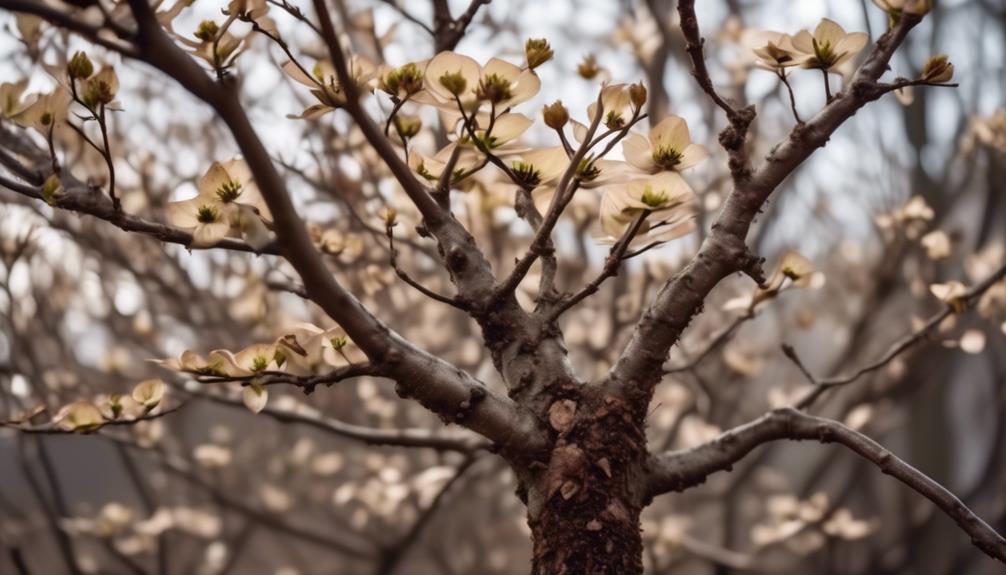
If you're looking for remedies to manage the crown canker disease in dogwood trees, here are some effective measures to consider.
Crown canker is characterized by a discolored, oozing canker at the tree's crown and can weaken the tree, making it susceptible to other pathogens. Symptoms include diminished vigor, reduced foliage, and lighter leaves.
To manage the disease, it's important to avoid trunk wounds and splashing leaves and flowers with water. Additionally, regularly inspect the tree for any signs of cankers and prune affected branches to prevent the spread of the disease.
Proper sanitation practices, such as removing fallen leaves and water sprouts, can also help reduce the risk of infection.
Discula Anthracnose Management
Manage Discula anthracnose, caused by the Discula destructiva fungus, with these effective strategies:
- Plant resistant species and cultivars like Cornus kousa and Rutgers Hybrids to reduce the risk of infection.
- Apply fungicide sprays starting at bud break to control the disease and prevent further spread.
- Keep the tree healthy by providing adequate water and nutrients, as stressed trees are more susceptible to fungal growth.
- Prune and remove infected branches and cankers to prevent the disease from spreading to other parts of the tree.
- Monitor the tree closely, especially during wet and humid periods, as these conditions favor the development of spot anthracnose.
These strategies, recommended by the University's Extension Plant Pathology Slide at Virginia Polytechnic Institute and the Department of Agriculture and Consumer Services, will help you effectively manage Discula anthracnose and protect your dogwood trees from the damaging effects of this fungal disease.
Powdery Mildew Prevention and Treatment
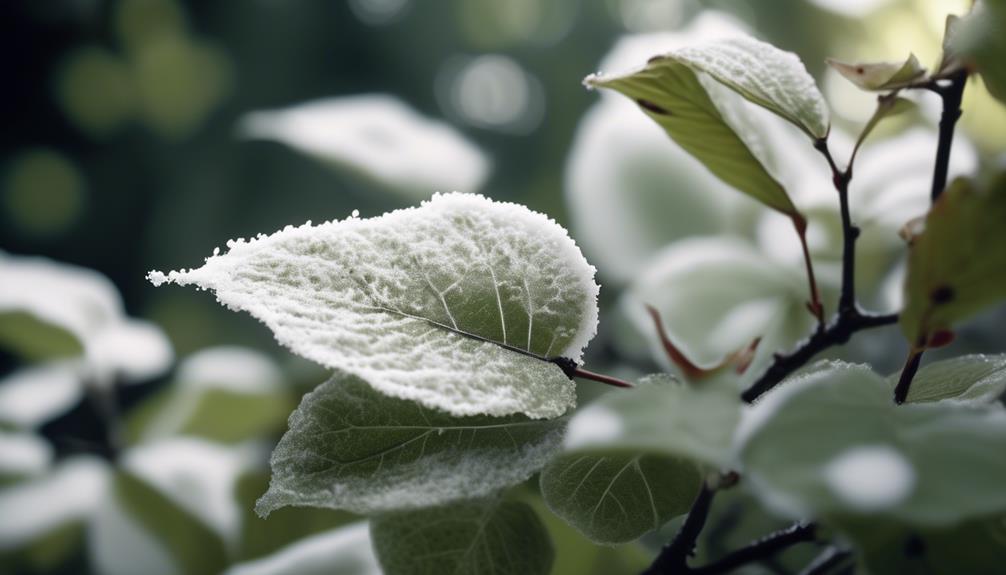
To effectively prevent and treat powdery mildew in dogwood trees, implementing proper cultural practices and timely fungicide applications is crucial.
Powdery mildew is a common fungal disease of flowering and dogwood trees that manifests as white, powdery spots on the leaves. If left untreated, these spots can cause significant damage to the tree, affecting both the leaf and twig health.
To prevent powdery mildew, it's important to maintain good air circulation around the tree by pruning and thinning branches regularly. Additionally, watering the tree at the base and avoiding overhead irrigation can help reduce the humidity that promotes fungal growth.
If powdery mildew does occur, applying fungicides at the first sign of infection can effectively control the disease and protect the tree's health.
Conclusion
In conclusion, dogwood trees are susceptible to several common diseases such as powdery mildew, spot anthracnose, and dogwood anthracnose. These diseases can be managed through proper cultural practices such as pruning infected branches, improving air circulation, and planting disease-resistant cultivars.
Additionally, removing fallen leaves and dead or cankered twigs can help prevent and control these diseases. By implementing these measures, dogwood tree owners can effectively treat and prevent the most common diseases that affect their trees.

